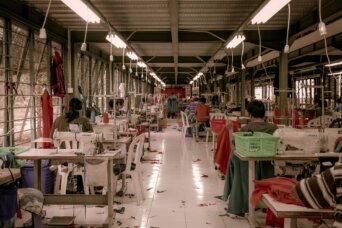- About
- Topics
- Picks
- Audio
- Story
- In-Depth
- Opinion
- News
- Donate
- Signup for our newsletterOur Editors' Best Picks.Send
Read, Debate: Engage.
| topic: | Human Trafficking |
|---|---|
| located: | Venezuela, Argentina, Bolivia, Cuba, Brazil |
| editor: | Ellen Nemitz |
Human trafficking is a profitable, hidden and, at the same time, widespread crime. According to the NGO A21, whose mission is to abolish all kinds of modern slavery, it generates an average of $150 billion in revenue every year at the cost of the freedom and safety of about 40 million people - mainly women and girls. Vulnerability factors vary and include poverty, violence and abuse, poor education, homelessness and unemployment.
Moreover, the US Department of State also mentions in the Trafficking in Persons Report from July 2022 that the climate crisis as an exacerbating risk for those who can be deceived by false job offers, for example, which are just a hook for victims to leave their places towards abusive situations of forced labour and sexual exploitation. Besides, the report assesses that the green-energy transition requires elements such as silica and cobalt, whose extraction often relies on forced labour.
The actions to tackle the trafficking in persons once and for all are weak in most of Latin America, however. Only five countries in the region fulfil minimum standards for its elimination, as the US Department of State's Report shows: Argentina, Chile, Colombia, Guyana and The Bahamas. Meanwhile, Venezuela, Nicaragua and Cuba are not making significant efforts to meet the standards - Cuba is also included in the list of countries in which the government itself is involved in the crime.
Despite the hopeless overall scenario, the transnational initiative Track4Tip, implemented in 2019 by the United Nations Office on Drugs and Crime (UNODC) in Latin America, aims to address the human trafficking cases that occur with the migrant and refugee population of Venezuela - the project coordinator of UNODC in Brazil, Daya Hayakawa, confirms that migrants are especially vulnerable to human trafficking.
Track4Tip gathers eight countries, including Brazil, Colombia, Ecuador, Peru and Caribbean nations, to build knowledge and international cooperation against this threat. One example of a successful initiative comes from Roraima, a Brazilian state which served as one of the main routes for Venezuelans entering the country, where the project helped the Public Prosecutor's Office to offer training for migrants, as well as for the professionals who work directly with them.
Another way of raising awareness to the problem is the campaign "Can you see me?" launched by A21 three years ago and later translated into Spanish to reach the LatAm community. The slogan "Puedes Verme?" alerts to the fact that human trafficking and slavery still exist, and sometimes occurs in plain sight. Thanks to the campaign, A21 has so far been able to rescue and help 26 survivors from human trafficking by May 2022, one year after its arrival in the region.
These initiatives prove that while governmental efforts to identify and charge criminals are crucial to end human trafficking, so is the population’s awareness and education. Beyond the upcoming International Day Against Human Trafficking 2022, marked on 30 July, everyday actions are the ones that really matter. Awareness campaigns should be widespread in poor and marginalised communities throughout Latin America, as well as in schools with kids of all ages, to prevent the most vulnerable from being captivated by false promises that are truly just traps.
Photo by Rio Lecatompessy
